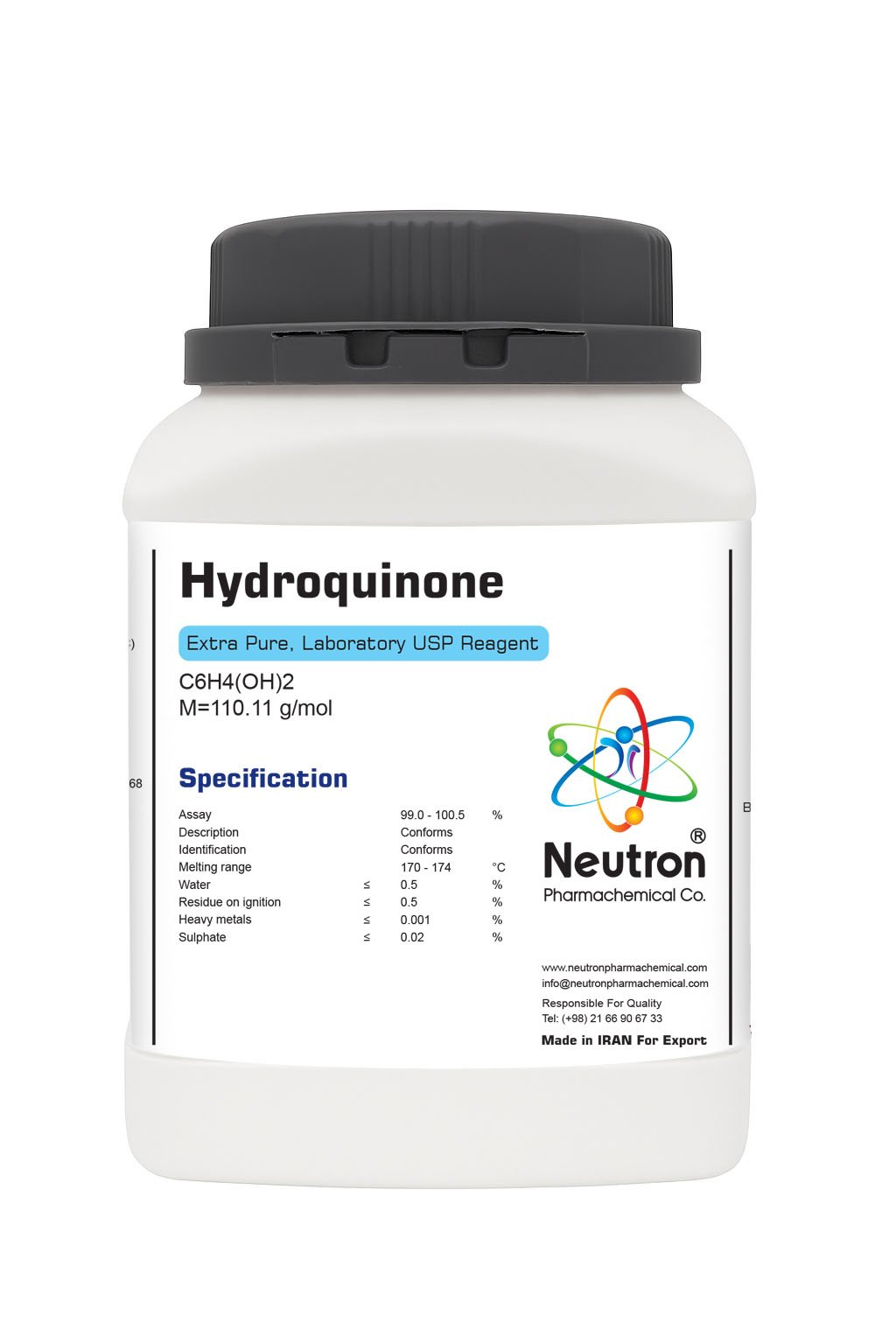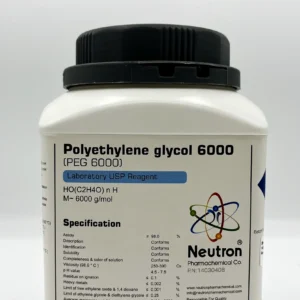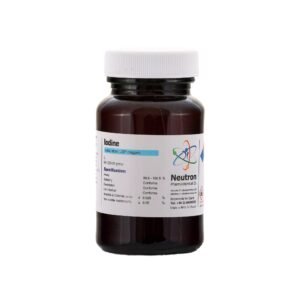هیدروکینون
| Formula | C6H6O2 |
| Chemical formula | C6H4(OH)2 |
| Density | 1.358 g/cm3 (20°C) |
| Molar mass | 110.11 g/mol |
| Bulk density | ~ 600 kg/m3 |
| CAS number | 123-31-9 |
| HS Code | 29072200 |
| EC number | 204-617-8 |
| Storage | Store at 5 -25 °C |
| SDS | available |
| R Phrase | R 22-40-41-43-50-68 |
| S Phrase | S 26-36/37/39-61 |
| Odour | almost oderless |
| Form | solid |
| Color | colorless to white |
| Ignition temperature | 515 °C |
| p H | 3.75 (70g/l 20 °C) |
| Solubility in water | 70 g/l (25°c) |
| Solubility in ethanol | freely soluble |
| Flash point | 165 °C |
| Boiling point | 287 °C |
| Melting point | 172 °C |
| Vapour pressure | < 0.1 hpa |
| Thermal decomposition | >170 °C (25°C) |
| Assay | 99.0 – 100.5 | % | |
| Description | Conforms | ||
| Identification | Conforms | ||
| Melting range | 170 – 174 | °C | |
| Water | ≤ | 0.5 | % |
| Residue on ignition | ≤ | 0.5 | % |
| Heavy metals | ≤ | 0.001 | % |
| Sulphate | ≤ | 0.02 | % |
Hydroquinone, also known as benzene-1,4-diol, is an aromatic organic compound with the chemical formula C₆H₄(OH)₂. It appears as a white crystalline solid and is a type of phenol, known for its reducing properties and applications in photography, cosmetics, and chemical synthesis.
🏭⚗️ Production
Hydroquinone is industrially produced through the hydroxylation of phenol using hydrogen peroxide in the presence of a catalyst. Another method involves the oxidation of aniline followed by hydrolysis. It can also be obtained from the reduction of quinone.
🔬 Properties
Hydroquinone is a white to off-white crystalline solid with a slight phenolic odor. It is soluble in water, alcohol, and ether. It has strong reducing properties and is easily oxidized to quinone. It melts at about 172 °C and is sensitive to light and air, often darkening upon exposure. It is considered a hazardous substance due to its potential toxicity and skin sensitization.
🧪 Applications
• Photographic developer: Used to reduce silver halides to elemental silver in black-and-white film processing.
• Skin lightening: Used in topical creams to reduce hyperpigmentation, though its use is regulated in many countries due to safety concerns.
• Polymer industry: Acts as an inhibitor in the polymerization of monomers like styrene.
• Chemical intermediate: Involved in the production of antioxidants, dyes, and other organic compounds.
• Laboratory reagent: Utilized in redox reactions and analytical chemistry.





